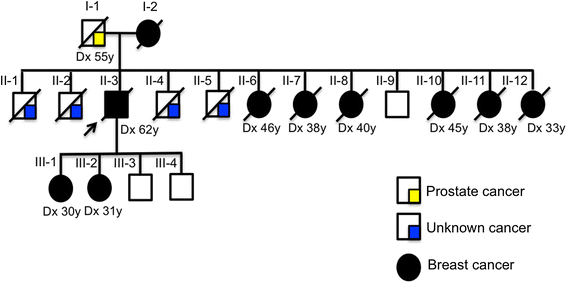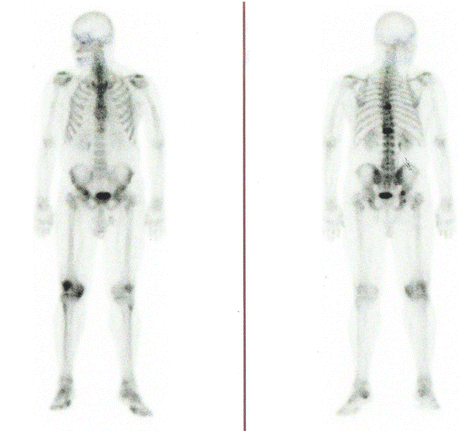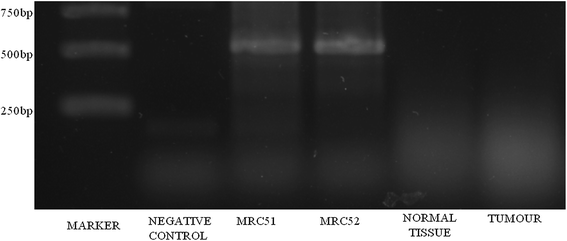Identification of a new BRCA2 large genomic deletion associated with high risk male breast cancer
- PMID: 25632310
- PMCID: PMC4308828
- DOI: 10.1186/s13053-014-0022-x
Identification of a new BRCA2 large genomic deletion associated with high risk male breast cancer
Abstract
Background: Male breast cancer (MBC) is an uncommon disease that has been the focus of limited research. It is estimated that approximately 10% of men with breast cancer have a genetic predisposition, with BRCA2 being the most prevalent genetic mutation. Here we describe the case of MBC in a 64-year-old man who presented on physical examination a nodule in his left breast and declared to have an extensive family history of cancer.
Methods and results: The patient was firstly diagnosed with an invasive ductal carcinoma (IDC) with histological grade III, nuclear grade 3, pT4N2Mx and positive for hormonal receptors and HER2. Exome sequencing was performed by massive parallel sequencing which had detected a novel BRCA2 germline mutation that is a large genomic deletion of 3,492 nucleotides including BRCA2 exon 14, and this deletion is out of frame and is predicted to lead to a stop codon in exon 15 at codon 2,496.
Conclusion: Large rearrangements in BRCA1 and BRCA2 occur in a small percentage (<1%) of patients tested for hereditary breast and ovarian cancer. This is the first report of the mutation del3492 in BRCA2 exon 14, which leads to a truncated protein and therefore is clinically relevant. Mutation segregation analysis should be further done in the Brazilian population. Herein we highlight the importance of next-generation sequencing in the detection of large genomic deletions.
Keywords: BRCA2 mutation; Large genomic deletion; Male Breast Cancer (MBC); Next-generation sequencing.
Figures




References
-
- Korde LA, Zujewski JA, Kamin L, Giordano S, Domchek S, Anderson WF, Bartlett JMS, Gelmon K, Nahleh Z, Bergh J, Cutuli B, Pruneri G, McCaskill-Stevens W, Gralow J, Hortobagyi G, Cardoso F. Multidisciplinary meeting on male breast cancer: summary and research recommendations. J Clin Oncol. 2010;28:2114–22. doi: 10.1200/JCO.2009.25.5729. - DOI - PMC - PubMed
Grants and funding
LinkOut - more resources
Full Text Sources
Other Literature Sources
Research Materials
Miscellaneous

